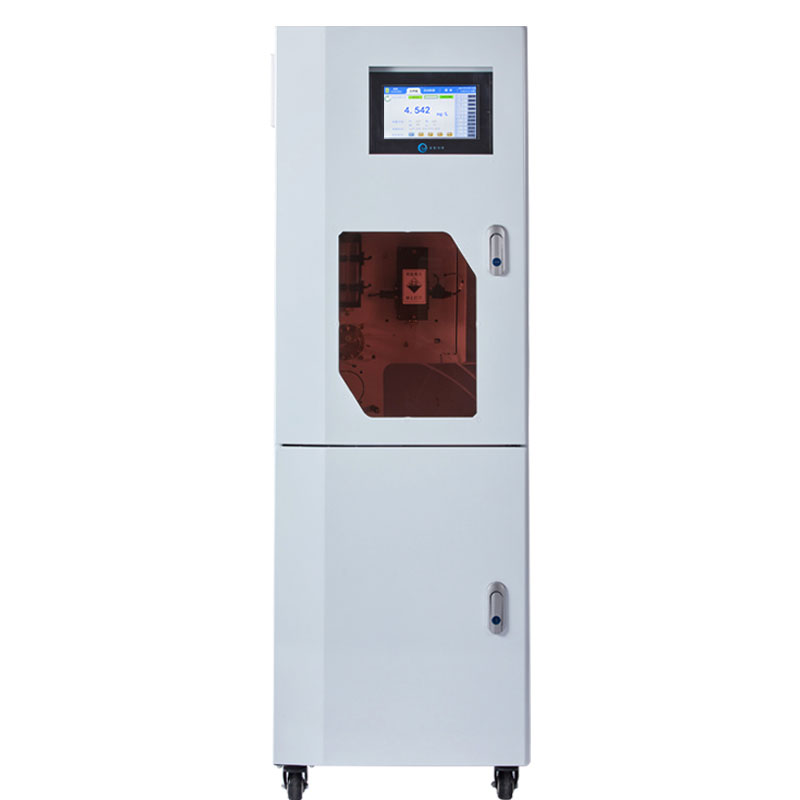Shandong Fengtu IOT Technology Co., Ltd
Sales Manager:Ms. Emily Wang
Cel,Whatsapp,Wechat:+86 15898932201
Email:info@fengtutec.com
Add:No. 155 Optoelectronic Industry Accelerator, Gaoxin District, Weifang, Shandong, China

Sales Manager:Ms. Emily Wang
Cel,Whatsapp,Wechat:+86 15898932201
Email:info@fengtutec.com
Add:No. 155 Optoelectronic Industry Accelerator, Gaoxin District, Weifang, Shandong, China

Model:FT-SZAD
Brand:fengtu
1.Principle of Online Ammonia Nitrogen Analyzer
In an alkaline medium (pH=11.7), ammonia and ammonium ions in the sample react with hypochlorite released from sodium dichloroisocyanurate solution to form chloramine; at 40°C and in the presence of sodium nitrosoferricyanide, chloramine reacts with salicylate to form a blue-green compound, and the absorbance is measured at a specific wavelength using a spectrophotometer.
2. Product Features of Online Ammonia Nitrogen Analyzer
The new photoelectric quantitative technology is not affected by interference such as large chromaticity, large amounts of suspended matter, and large amounts of bubbles. It has high reliability and accuracy and strong anti-interference ability.
High detection accuracy, low measurement limit and small long-term drift of the instrument.
It has one-button self-test function and self-diagnosis function.
Adopt single-channel highly integrated valve group, maintenance and cleaning are simple and quick.
All-weather networking function, monitor the instrument operation status anytime and anywhere.
It has alarm function, quality control function and reverse control function.
It has automatic cleaning and automatic calibration functions.
It has functions of hourly measurement, interval measurement and external control measurement.
It will work automatically after power failure.
Automatic prompt and automatic reset function for fault and reagent (sample) shortage.
With fault recording function.
Can save historical data for more than 3 years.
Meet the requirement of separate discharge of cleaning liquid and waste liquid
3. Technical parameters of Online Ammonia Nitrogen analyzer
Measurement method: HJ536-2009 Water quality ammonia nitrogen-salicylic acid spectrophotometry (Nessler method can be customized)
Measuring range: 0-2 mg/L; 0-10 mg/L; 0-50 mg/L; range can be customized
Indication error: ≤±3% Detection limit: 0.01mg/L
Repeatability: ≤±2% Waste volume: 6mL/time
Memory effect: ≤±3% Actual water sample comparison: ±8%
Constant temperature time: 360 seconds Voltage stability: ≤±5%
Measuring cycle: 30 minutes Calibration cycle: any specified time
Maintenance cycle: ≥720h/time Maintenance workload: <2 hours/month
Reagent consumption: 3 months/500ml Display output: Equipped with 10.1-inch color LCD touch screen
Color development temperature: recommended temperature is 45℃, can be set according to the actual water sample conditions
Data export: The measured values can be imported into a USB flash drive and saved via the USB port
Signal output: RS485/RS232/USB interface/standard 2-way 4-20mA output/standard 2-way switch input and output
Environmental requirements: Temperature-controlled indoor environment, recommended temperature (5-28°C), humidity ≤ 90% (no condensation)
Power supply and power: (220V±22)V/AC, (50±0.5Hz), 5A, 150W
Instrument size: upper cabinet 600*450*300mm; upper cabinet 700*450*300mm
In recent years, the construction of high-standard farmland has achieved remarkable results, with its core being "turning small plots into large ones" and "transforming grain fields into fertile ones". In the past, farmland fragmentation was severe, with ridges crisscrossing each...
The development of Portable Weather Stations stems from the need for rapid, flexible, and temporary meteorological observations, applied in fields such as emergency disaster reduction, scientific expeditions, and military support to compensate for the shortcomings of fixed stations.Real-time meteoro...
Visibility data is crucial for the safe conduct of various activities, and the Environment Visibility Sensor is the "hardcore player" that can shoulder this responsibility.In terms of protection, its housing is made of high-quality aluminum material, treated with anodizing and painting, fu...
The automatic monitoring station of ambient air quality can conduct real-time online monitoring of pollution factors in the air, and can provide data feedback through a large screen or display data through the user data statistics port. The monitoring items include the four gases and two dusts inclu...